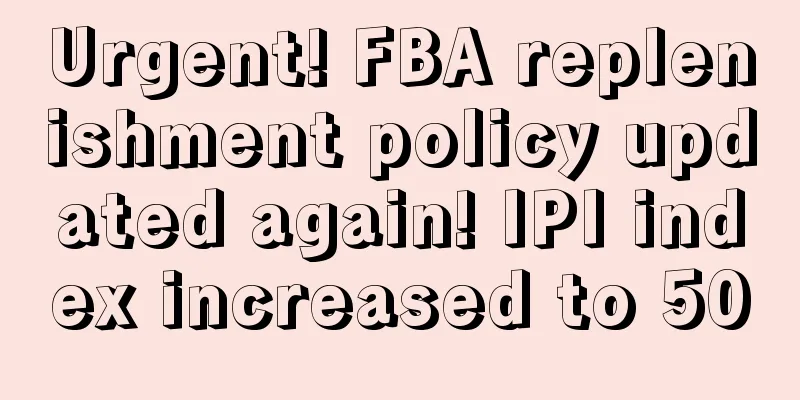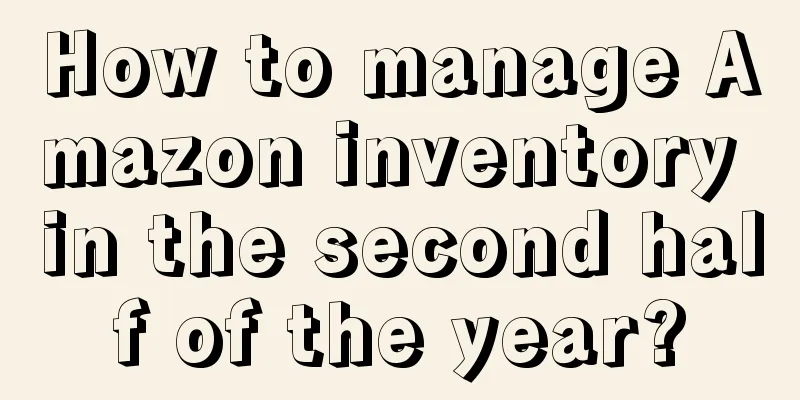|
Recently, Amazon launched a new process for creating shipments through FBA called "Send to Amazon" . Amazon said that if sellers use FBA, creating shipments is the first step for sellers to send shipments to Amazon's operations center. The new process is simpler, more flexible, and more efficient, allowing sellers to easily create shipments and save time. Amazon in May is like the unpredictable weather in summer. The sudden new policies always catch sellers off guard. Before sellers can recover from the new delivery process, a new round of replenishment policy adjustments is coming. Since Amazon adjusted its FBA replenishment policy last month, changing from limiting the number of goods entering the warehouse by ASIN to limiting the number of goods entering the warehouse by storage type, many sellers have been in tears and have suffered enough from the restrictions on shipping. Limiting storage capacity is equivalent to limiting sales, which puts a group of sellers in the awkward situation of "a good cook cannot cook without rice". ▲ The picture comes from the seller communication group It can be said that limiting storage capacity is one of the strongest enemies for sellers on the road to explosive sales. However, Amazon does not think so. Based on the principle of "I am happy", today, Amazon suddenly updated its replenishment policy and IPI score. What surprises will it bring to sellers this time? Amazon adjusts FBA replenishment restriction policy This morning, Amazon Europe announced that sellers’ products currently account for more than 60% of the inventory in Amazon’s UK and EU fulfillment centers. Therefore, measures need to be taken to ensure that all sellers using FBA have space to store products and can receive inventory as soon as possible, especially before Prime Day. It is reported that this adjustment includes two aspects: one is the update of replenishment restriction policy, and the other is the adjustment of inventory performance indicators. In terms of replenishment limits, Amazon said that it will reduce replenishment limits from May 16, 2021, so that sellers can receive inventory as soon as possible and do not affect delivery to buyers. On average, sellers can restock 2 to 3 months of inventory in Amazon fulfillment centers. Although reducing the replenishment limit is good news for sellers, there are many restrictions on the relaxation of the replenishment quantity. Amazon emphasizes that the replenishment limit is determined by a variety of factors, including Prime Day transactions, new carrier selection, historical sales performance, current inventory levels, shipping time, and available fulfillment center capacity. Therefore, sellers can only enjoy the policy of reducing replenishment limits if they meet the above conditions. Even though the replenishment quantity is determined by multiple factors, from the actual situation of sellers, it is difficult to tell which factor has the greatest impact on the replenishment quantity. At the same time, some sellers reported that sales in the past week were very high, but the number of FBA shipments was decreasing. This is exactly the opposite of the saying that the better the sales, the greater the replenishment quantity. ▲ The picture comes from the seller communication group In addition to the replenishment restrictions that cause sellers headaches, Amazon’s requirements for sellers’ inventory performance indicators are also getting higher and higher. Amazon adjusts its Inventory Performance Index Amazon announced that the Inventory Performance Index (IPI) score threshold will change from 450 to 500 starting July 1, 2021. If a seller's IPI score is below 500 in the week of May 17, 2021 and June 21, 2021, they will face storage capacity restrictions in the third quarter of 2021 , and storage restrictions will continue to be evaluated on a quarterly basis. Sellers who maintain an IPI score of 500 or higher will continue to have unlimited storage for standard and oversized items. Monthly storage fees and long-term storage fees still apply, and all sellers, regardless of their IPI score, will be subject to replenishment limits. Many sellers have tried their best but still have difficulty meeting the standards before the assessment. However, Amazon has once again raised the IPI score index, dealing a fatal blow to sellers whose inventory performance is already poor. For them, they will once again face difficult storage capacity restrictions in the third quarter of this year. Judging from the series of policies updated by Amazon, the importance of inventory management for sellers is increasing significantly, so sellers should also pay attention to it. Mastering certain inventory management skills can reduce storage fees and inventory costs, thereby improving overall profitability. Sellers whose IPI scores have not yet reached the target can refer to the following suggestions: 1. Increase your sales rate 3. Avoid huge storage fees 4. Proactively and promptly resolve inventory replenishment and sales issues The above is all the content of today’s Amazon announcement update. I wonder what sellers think of Amazon’s adjustment to its FBA replenishment policy? Feel free to leave a message in the comment section~
|










